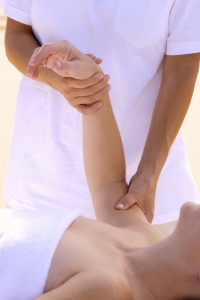Ouch! I don’t even like reading about this one. Nonetheless, “frozen shoulder pain” or as it is known more scientifically as “adhesive capsulitis” is an extremely painful and often debilitating condition. In fact it is not even that uncommon, as up to three percent of the population will have to deal with this in their lifetime. The symptoms of this shoulder injury are generally characterized by extreme inflammation and stiffness of the shoulder. Sufferers report symptoms consistent with a discomfort that tends to be present 24/7 with flare ups of more intense pain during sleep, or attempts at sleep (I can’t even sleep if the temperature is not almost exactly 67 degrees.)
Adhesive Capsulitis is caused by a cramping or thickening of the tissue around the shoulder. If you are under 40 and/or don’t have diabetes or a have not experienced a trauma or accident your risk for suffering from frozen shoulder are significantly decreased. Nonetheless, this nefarious condition can affect most anyone at anytime.
The good news is that frozen shoulder treatment options are generally effective. The bad news is that they can be fairly painful. Your doctor may recommend a course of physical therapy, medication or manipulation to loosen the scar tissue. In some cases, surgery may also be the advisable course of treatment.
As with many other joint and muscle conditions when in doubt visit your doctor as other diseases or more serious illnesses could be mistaken for this particular condition. Finally, please share your story with us if you have been so unfortunate as have gone through this type of upper body pain.


Is this in any way related to having had a dislocated shoulder earlier in life? I’ve never had frozen shoulder pain but I hope I’m not a risk as the result of my previous injury about 10 years ago. Occasionally I’ll get a sort of arthritis like stiffness but none of the locking or searing pain associated with this.